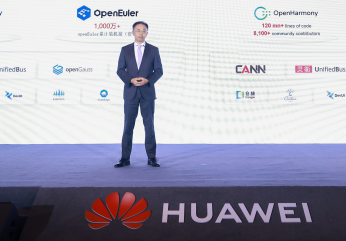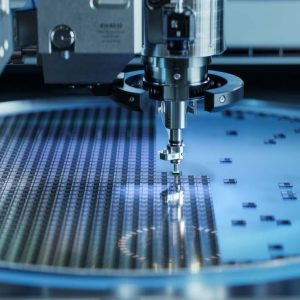
Huawei’s position as a significant player in worldwide communications and IT technologies is intrinsically linked to its consistent focus on long-term research and development (R&D), a strategy that has helped it navigate an industry that is both competitive and disruptive.
Huawei contributes 20% of its annual revenue directly towards R&D. This means that in the past decade, more than ¥1.2 trillion has been invested in areas such as computer operating systems and next-generation connectivity, resulting in an extensive patent portfolio, ensuring that Huawei has an active role on the world stage, championing open innovation, industry partnerships and global technology standards.
For Huawei, prioritising R&D means not just keeping pace with change but actively shaping it, turning ideas into practical solutions, and influencing the wider direction of the entire technology sector.
Innovation and Intellectual Property (IP) Forum 2025
Huawei recently highlighted its commitment to R&D by hosting its sixth Innovation and Intellectual Property (IP) Forum in Beijing, bringing together experts from across the globe to discuss how openness and IP protection drive innovation. The event also featured Huawei’s biannual “Top Ten Inventions” award, recognising breakthroughs in areas such as computing – with key innovations behind the SuperPoD Computing Platform and the HarmonyOS next-generation intelligent operating system – as well as foldable PCs and the Ultra Chroma Camera.
At the event, Chief Legal Officer Song Liuping reaffirmed Huawei’s commitment to open innovation and robust IP protection, noting that in 2024, Huawei’s patent licensing revenue reached US$630 million, with the company historically paying out around three times in royalties than it receives. Guest speakers, including Marco Alemán, Assistant Director General of the World Intellectual Property Organization (WIPO), Etienne Sanz de Acedo from the International Trademark Association (INTA) and Ningling Wang from the Licensing Executives Society International (LESI), praised Huawei’s leadership in global IP, with WIPO highlighting Huawei’s 6,600 PCT applications in the last year and its status as the top PCT user since 2014.
Alan Fan, Huawei’s VP and Head of IP Rights, described the company’s record-setting 37,000 patent publications in 2024, with over 10,000 technical contributions to standards and more than 1,000 academic papers. He also highlighted the growth of Huawei’s open-source projects, including contributions to OpenHarmony and openEuler, both of which have seen major community engagement and adoption.
Finally, the forum spotlighted the Chaspark Patent platform, a free, global patent search tool launched in 2024, boosted with AI for more effective searches and summaries, and designed to make patent information more accessible to researchers and innovators.
Why are patents so important?
Patents protect inventors’ rights (usually a company) and encourage investment in research by ensuring commercial rewards. They also require public disclosure, thereby promoting knowledge sharing, collaboration, and supporting innovation. Huawei uses patents as a core part of its business and innovation strategy and has built up a large, diverse patent portfolio, which it leverages through licensing agreements, generating revenue and enabling technology sharing.
Huawei’s patents have made significant impacts in several key areas. In 5G technology, Huawei holds thousands of essential patents, enabling the licensing of over 2.7 billion 5G devices worldwide and shaping global standards. HarmonyOS, Huawei’s next-generation operating system, is built on patented innovations that enhance security and user experience, according to Sun Jie, Huawei’s Chief Researcher of Optimization and Control Theory. In hardware, Huawei’s patents for foldable device designs, such as hinges and ultra-thin profiles, have set new standards for smartphones and PCs.
By working closely with major industry players, Huawei also benefits from a diverse exchange of ideas and expertise, with these partnerships helping to drive the adoption of new technologies and support the development of robust, industry-wide solutions.
The importance of R&D
In a landscape defined by rapid technological change and intense global competition, ongoing research is essential for maintaining a competitive edge and anticipating future needs. Looking ahead, sustaining innovation by fostering an environment where ideas and technologies can be freely exchanged, ensures that the benefits of technological progress are accessible to as wide a selection of researchers and innovators as possible. This approach not only speeds up progress and advancement but also fosters partnerships that drive progress across all industries.
For Huawei, this means not only developing new products and solutions but also shaping the broader ecosystem through open standards, industry collaboration and a commitment to digital inclusion. As the company looks to the future, its dedication to R&D will remain the driving force behind its ability to lead, adapt, and deliver value in an increasingly interconnected world.
“No matter what changes come our way, we will remain committed to openness, collaboration, and innovation,” Song Liuping stated during the IP Forum. “We are moving (ever) faster towards a fully connected, intelligent world. Both connectivity and computing will be more important than ever. And so will protecting and rewarding innovation.”
Alan Fan commented: “Long-term investment in innovation, backed by the utmost respect for intellectual property, has been the driving force behind Huawei’s success, and also forms the cornerstone of our vision to build a fully connected, intelligent world.”
Huawei’s Top Ten Inventions 2025
Revealed at the Intellectual Property (IP) Forum in Beijing, Huawei’s Top 10 Inventions highlight the company’s commitment to pushing technological boundaries. Each innovation on this list represents a step forward in making advanced technology more accessible, efficient, and secure, reflecting Huawei’s ongoing investment in research and development and its influence on the future of digital infrastructure.
- SuperPoD computing platform: Integrates vast AI resources for flexible, large-scale computing.
- HarmonyOS: Full-stack OS innovation for seamless, secure user experiences.
- Foldable devices: Advanced hinges and slim designs enable tri-fold smartphones and large foldable PCs.
- Short Reach Optical Interconnect: Boosts computing cluster reliability and efficiency.
- Next-Gen SSD: Ultra-high capacity, rapid recovery, and enhanced AI storage.
- GigaGreen RAN: Energy-efficient, high-integration wireless base stations.
- Assisted driving: Real-time environmental awareness for safer, smarter vehicles.
- Ascend Inference Acceleration: Mathematical optimisation for peak AI chip performance.
- 50G PON: High-speed, reliable fixed access with advanced optical tech.
- Ultra Chroma Camera: Delivers true-to-life colour with multi-spectral processing.






